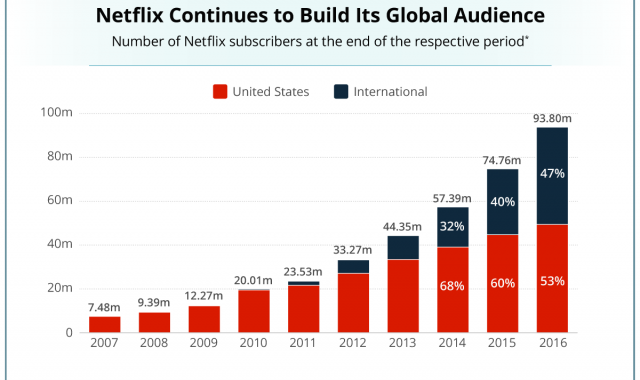By Elana Lyn Gross, Contributor
For many, the Roomba is a beloved device that diligently vacuums while they’re away. Yet for the CEO of iRobot, the maker of the Roomba vacuum, the device’s cleaning capabilities are only a small fraction of its value.
Since the Roomba regularly scales people’s homes, tech companies that offer smart products and services from home lighting to security cameras are interested in iRobot’s data on room dimensions and furniture layouts. “There’s an entire ecosystem of things and services that the smart home can deliver once you have a rich map of the home that the user has allowed to be shared,” Colin Angle, chief executive for iRobot Corp told Reuters.
And it’s not only smart home appliance companies that are hungry for iRobot’s data.
This past March, Roomba struck a deal with Amazon’s Alexa that made the cleaning device compatible with the voice-activated robot. In addition to allowing home users to yell at their vacuum to begin cleaning, Reuters analysts suspect the deal is movement toward data-sharing between iRobot and Amazon, who will use data collected from Roomba’s Clean Map feature—a map (with dimensions) of clean areas in the home or apartment—to make smarter in-home product recommendations.
Despite privacy concerns, iRobot users have so far been pleased with the iRobot-Amazon deal. From June 2016 to June 2017, iRobot stock more than tripled, raising its market value to $2.5 billion and confirming the lucrative potential of data-motivated partnerships.
Letting Go of the Proprietary Mindset
According to Adelyn Zhou, the chief marketing officer of TOPBOTS, a leading research and strategy firm that advises Fortune 500 clients on AI innovation, data sharing is not only about immediate revenue generation. From her vantage point, it also signals momentum toward a healthy (and free) environment of research collaboration and competition.
“If a company has useful proprietary data, they can potentially get world-class academics and organizations to work with the data to develop new findings, for no cost, in exchange for sharing data,” Zhou said.
She highlighted The Netflix Prize as a now classic example. In 2006, Netflix CEO Reed Hastings decided to release the company’s proprietary data—over 100 million ratings of 17,770 movies from 480,189 customers—to the public. Despite the risks associated with allowing competitors access to the plethora of data, Hastings understood that in order to innovate the user experience (and revamp the company model), Netflix would need to develop a new algorithm to better predict viewer preference.
“If we knew how to do it, we’d have already done it,” Hastings told The Times in 2006, “And we’re pretty darn good at this ow.”
The winner of the contest took home $1 million dollars, but the result for Netflix has compounded over time. Data collected from the results of the improved algorithm has gone on to develop Emmy-winning Netflix original series like House of Cards and The Handmaid’s Tale, and as Thrillist puts it, “changed binge-watching forever.”
Netflix profits, too, have soared. Based on Business Insider findings, from 2007 to 2017, Netflix subscriptions have climbed from 7.48 to 93.80 million.

When Data Sharing is Caring
Digital data sharing has also had a tremendous impact on the medical community. Although research collaboration has been a longtime tradition in the medical field, results from medical data sharing have amplified in the digital age.
In 2014, for example, the personal genetics firm, 23andMe, gave pharmaceutical giant, Pfizer, access to its users genome database—which people consent to before purchasing a DNA kit—for research purposes. The initial data-sharing deal inspired a Lupus trial with over 5,000 new genome sets, and inflammable bowel syndrome research with DNA from over 10,000 individuals.
While the public speculated about the handoff of anonymous DNA data to a large pharmaceutical company, 23andMe nonetheless earned respect in the medical research field, and simultaneously secured a new business model. By early 2015, 23andMe had a new deal with Roche Group’s Genetech for up to $60 million to share data that would map the entire genome for 23andMe’s Parkinson’s patients.
Of course, this type of data mingling comes with its fair share of anxieties. “Data is extremely valuable, but is similar to a company’s intellectual property,” Zhou explained. “It’s essential to ensure that a company keeps its own data secure.”
This security element of data collection is not only important to maintain a competitive edge, Zhou said, but also to prevent damaging events like a data leak. The September 2017 Equifax data breach that affected up to 143 million Americans is an example of the risk involved in online data collection and storage.
Despite what is to be achieved in data-driven partnerships, Zhou warned that digital leaders must weigh benefits with potential competitive disadvantages and security missteps. It is vital, she said, that executives ensure their data-sharing methods are legal, ethical, and secure.
Yet like in so many business and creative situations—the bigger the risk, often, the greater the reward. With widespread access to emerging technologies, data, according to Zhou, may be the most lucrative advantage in the coming years. “Anyone can use the same cutting-edge artificial-intelligence [or digital development],” Zhou emphasized. “It is data that achieves [the next level of] results and applications.”
Perhaps business leaders of the future have something to learn about data sharing from the world’s most popular robot vacuum.